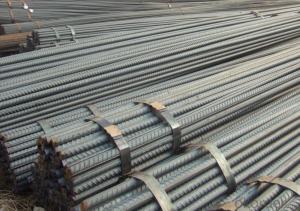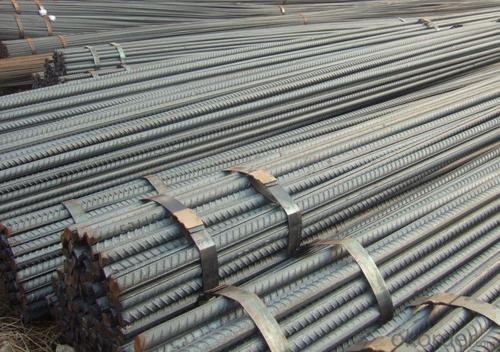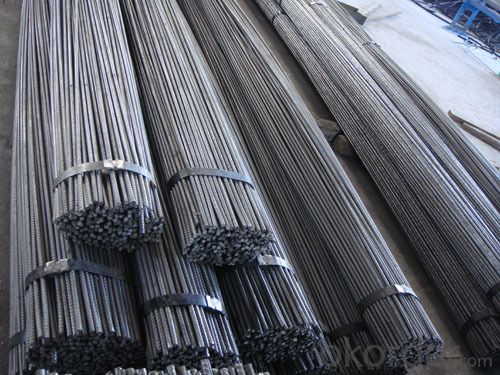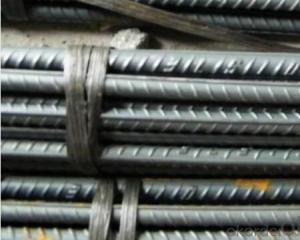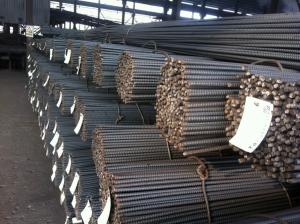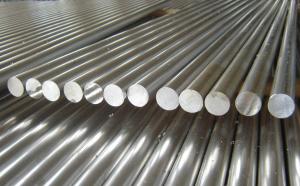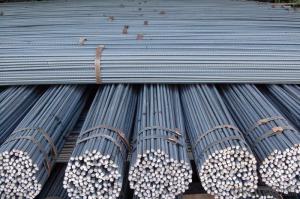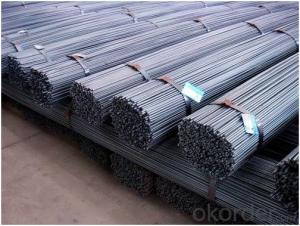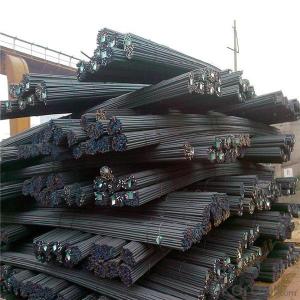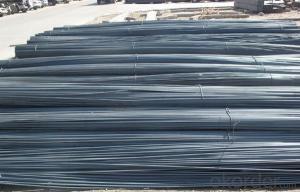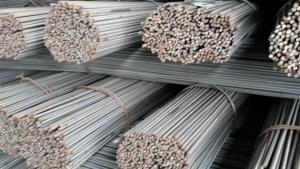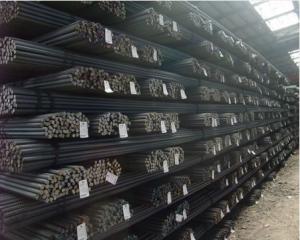Steel Deform Bar High Quality Steel,12mm ,HRB 500B Steel building Structural
- Loading Port:
- Tianjin
- Payment Terms:
- TT or LC
- Min Order Qty:
- 30 m.t.
- Supply Capability:
- 35000 m.t./month
OKorder Service Pledge
OKorder Financial Service
You Might Also Like
Product Specifications of Steel Deform Bar High Quality Steel,12mm ,HRB 500B Steel building Structural
Steel Deform Bar HRB 500B
1.China direct supplier
2.Best service
3.Competitive price
4.Quantity assured
Product Description Steel Deform Bar High Quality Steel,12mm ,HRB 500B Steel building Structural
| Name | High Quality Steel,12mm Steel Deform Bar,HRB 500B Steel building Structural |
| Standard | ASTM A615 /BS BS 4449 /GB HRB/ JIS G3112 |
| Grade | HRB500B |
| Diameter | 12mm-40mm |
| Length | 6-12m |
| Technique | Low temperature hot-rolling reinforcing deformed steel rebar |
| Tolerance | As the standard or as your requirement |
| Application | Building, construction, road, bridge,etc |
| Certificated | BV |
| MOQ | 500tons per size steel rebar |
| Packing details | Steel rebar packed in bundle or as your requirement |
| Delivery | Within 30 days after deposit |
| Payment | T/T or L/C |
Chemical Composition of Steel Deform Bar High Quality Steel,12mm ,HRB 500B Steel building Structural
Grade | Technical data of the original chemical composition (%) | |||||||
C | Mn | Si | S | P | V | |||
HRB400 | ≤0.25 | ≤1.60 | ≤0.80 | ≤0.045 | ≤0.045 | 0.04-0.12 | ||
Physics capability | ||||||||
Yield Strength(N/cm2) | Tensile Strength(N/cm2) | Elongation (%)
| ||||||
≥400 | ≥570 | ≥14 | ||||||
Theorectical weight of Steel Deform Bar High Quality Steel,12mm ,HRB 500B Steel building Structural
Diameter (MM) | Cross Sectional Area (MM2) | Theorectical Weight (KG/M) | Weight of 12M Bar (KG) | A Ton Contains 12M Bars (PCS) |
| 6 | 28.27 | 0.222 | 2.664 | 375.38 |
| 8 | 50.27 | 0.395 | 4.74 | 210.97 |
| 10 | 78.54 | 0.617 | 7.404 | 135.06 |
| 12 | 113.1 | 0.888 | 10.656 | 93.84 |
| 14 | 153.9 | 1.21 | 14.52 | 68.87 |
| 16 | 201.1 | 1.58 | 18.96 | 52.74 |
| 18 | 254.5 | 2 | 24 | 41.67 |
| 20 | 314.2 | 2.47 | 29.64 | 33.74 |
| 22 | 380.1 | 2.98 | 35.76 | 27.96 |
| 25 | 490.9 | 3.85 | 46.2 | 21.65 |
| 28 | 615.8 | 4.83 | 57.96 | 17.25 |
| 32 | 804.2 | 6.31 | 75.72 | 13.21 |
| 36 | 1018 | 7.99 | 98.88 | 10.43 |
| 40 | 1257 | 9.87 | 118.44 | 8.44 |
Product Picture of Steel Deform Bar High Quality Steel,12mm ,HRB 500B Steel building Structural
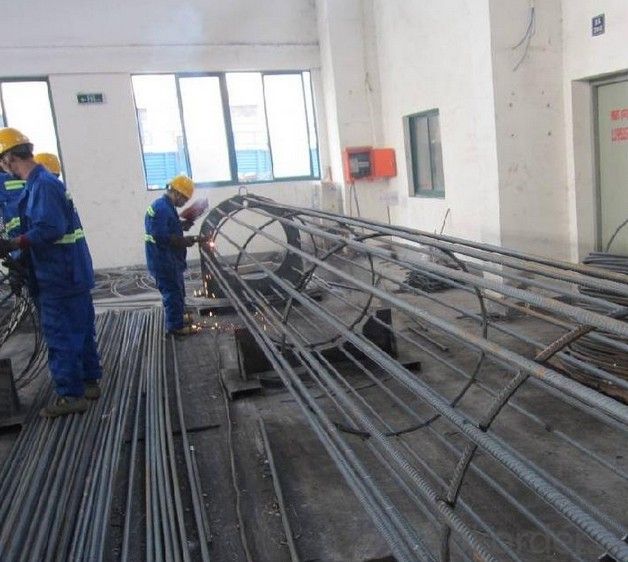
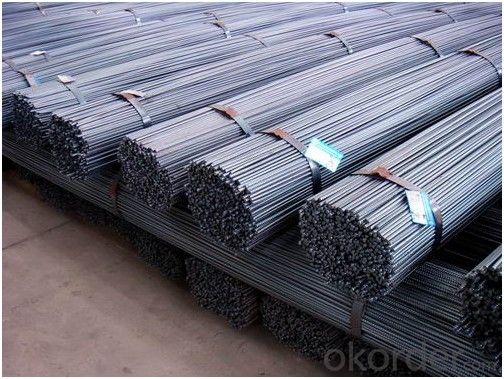
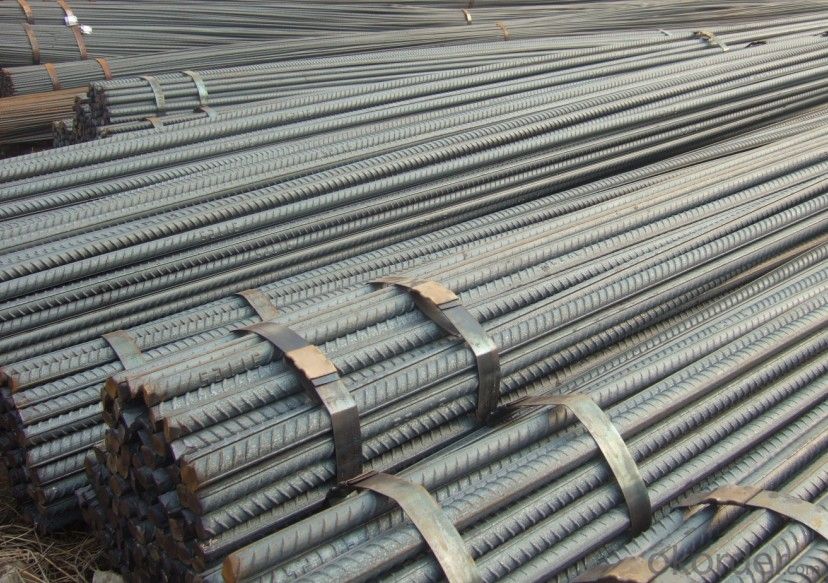
- Q: Are steel rebars susceptible to hydrogen embrittlement?
- Yes, steel rebars are susceptible to hydrogen embrittlement.
- Q: What are the different types of steel used in the production of rebars?
- The production of rebars involves the use of different types of steel. The selection of steel depends on factors like desired strength, corrosion resistance, and cost. 1. The most commonly used steel in rebars is mild steel. It has a low carbon content and is relatively affordable. Mild steel rebars are suitable for general construction purposes that do not require high strength. 2. High Strength Deformed Bars (HSD) are made from carbon steel with higher yield and tensile strength than mild steel. They are commonly used in reinforced concrete structures like bridges and high-rise buildings that require higher load-bearing capacity. 3. Carbon steel rebars are made by alloying steel with carbon, which enhances their strength and durability. They are often used in construction projects that require resistance to extreme temperatures and high tensile strength. 4. Stainless steel rebars have a high chromium content, providing excellent corrosion resistance. They are commonly used in coastal areas or structures exposed to high humidity to prevent rusting and maintain structural integrity. 5. Epoxy-coated rebars have a protective coating of epoxy resin, which adds an extra layer of corrosion resistance. They are suitable for structures exposed to harsh environmental conditions or chemicals. 6. Galvanized rebars are coated with zinc for superior corrosion protection. They are commonly used in high humidity areas where corrosion is a significant concern. 7. Alloy steel rebars are made by adding elements like manganese, nickel, or chromium to enhance their mechanical properties. They offer increased strength, improved ductility, and resistance to fatigue, making them suitable for specialized applications like seismic zones or heavy construction. Selecting the appropriate type of steel rebar is crucial for ensuring the durability, safety, and longevity of the structure in a construction project.
- Q: Can steel rebars be used in architectural concrete elements?
- Yes, steel rebars can be used in architectural concrete elements. They provide additional strength and reinforcement to the concrete structure, ensuring its durability and stability. Steel rebars are commonly used in architectural designs such as columns, beams, and slabs to enhance the overall structural integrity of the concrete elements.
- Q: What are the common quality control tests for steel rebars?
- Steel rebars undergo several quality control tests to ensure they meet industry standards and specifications. These tests assess the rebars' physical, mechanical, and chemical properties to guarantee their durability and performance. Common quality control tests for steel rebars include: 1. Tensile Test: This test determines the rebars' tensile strength, yield strength, and elongation. It involves gradually applying force to the rebar until it breaks, measuring the maximum force it can withstand. 2. Bend Test: This test evaluates the rebars' ability to withstand bending without cracking. The rebar is bent to a specific angle and inspected for visible cracks. 3. Chemical Composition Analysis: This test determines the rebars' chemical composition, ensuring they meet required standards. It involves analyzing the levels of carbon, manganese, phosphorus, sulfur, and other elements. 4. Visual Inspection: This test visually examines the rebars for surface defects like cracks or irregularities that could impact structural integrity. 5. Dimensional Inspection: This test verifies the rebars' dimensions and shape, checking for deviations from specified requirements. Instruments are used to measure diameter, length, and shape. 6. Weldability Test: If the rebars will be welded, a test is performed to assess their suitability for welding. The quality of the weld joint, including strength and brittleness, is evaluated. 7. Corrosion Resistance Test: This test determines the rebars' resistance to corrosion, which is crucial for long-term durability. It involves subjecting the rebars to accelerated corrosion conditions and assessing their resistance. These tests are essential in ensuring the quality and reliability of steel rebars used in construction projects. Manufacturers and inspectors can identify non-compliant or substandard rebars through these tests, ensuring the safety and structural integrity of buildings and infrastructure.
- Q: How are steel rebars protected against damage from seismic events?
- Steel rebars are protected against damage from seismic events by using various techniques. One common method is to design and construct buildings with reinforced concrete structures that incorporate adequate steel reinforcement. This reinforcement provides additional strength and flexibility to withstand the forces generated during an earthquake. Additionally, engineers may employ measures such as seismic bracing, base isolation systems, or dampers to absorb and dissipate seismic energy, further protecting the steel rebars and the overall structure from damage.
- Q: Can steel rebars be used in stadium and sports arena construction?
- Yes, steel rebars can be used in stadium and sports arena construction. Rebars, which are short for reinforcing bars, are commonly used in concrete structures to provide strength and durability. Stadiums and sports arenas are large structures that require the ability to withstand heavy loads and forces, such as the weight of the stands and the impact from crowds and sporting events. Steel rebars are an ideal choice for reinforcing the concrete used in these structures because of their high tensile strength and ability to distribute and resist these loads effectively. Additionally, steel rebars can be easily shaped and bent to conform to the specific design requirements of the stadium or sports arena, making them a versatile and practical choice for construction projects of this scale.
- Q: Are there any restrictions on the use of steel rebars in certain regions?
- Yes, there are certain restrictions on the use of steel rebars in certain regions. These restrictions can vary from region to region and are typically put in place to ensure the safety and integrity of structures. In some areas, building codes and regulations may dictate specific requirements for the use of steel rebars, such as the type, size, and placement of rebars. Additionally, there may be restrictions on the use of certain types of steel rebars, such as epoxy-coated rebars, due to environmental concerns. It is important for construction professionals to familiarize themselves with the local building codes and regulations to ensure compliance and promote the safety and durability of structures.
- Q: How do steel rebars contribute to the overall durability of a structure?
- Steel rebars contribute to the overall durability of a structure by providing reinforcement and strength to concrete. They increase the tensile strength of concrete, making it resistant to cracks and fractures. This reinforcement helps the structure withstand external forces such as earthquakes or extreme weather conditions, enhancing its longevity and structural integrity.
- Q: Are there any standards for the spacing of steel rebars in concrete?
- Steel rebars in concrete have specific spacing standards in place to guarantee the durability and structural integrity of the reinforced concrete. These standards may vary depending on factors such as the type of structure, load conditions, and local building codes. In the United States, the American Concrete Institute (ACI) provides guidelines for rebar spacing in their publication ACI 318, known as "Building Code Requirements for Structural Concrete." According to ACI 318, the minimum spacing between parallel reinforcing bars should be equal to or greater than the maximum bar size or 1.5 times the diameter of the largest coarse aggregate used in the concrete, whichever is larger. For instance, if the maximum bar size is 12mm and the largest coarse aggregate size is 20mm, the minimum spacing between the rebars should be 30mm (1.5 times the largest aggregate size). This ensures sufficient concrete cover around each rebar, protecting it from corrosion and providing adequate bond strength. In addition to the minimum spacing, ACI 318 also offers guidelines for the maximum spacing of rebars. These guidelines take into account factors such as the size and shape of the concrete member, the type of loading it will experience, and the required strength. The maximum spacing is typically determined to prevent excessive cracking and ensure proper distribution of loads throughout the structure. It is important to note that local building codes and regulations may have additional requirements or deviations from the ACI standards. Therefore, it is always recommended to consult the relevant building codes or work with a qualified structural engineer to ensure compliance with the specific spacing requirements for steel rebars in concrete in your area.
- Q: Can steel rebars be bent or shaped on-site during construction?
- Yes, steel rebars can be bent or shaped on-site during construction. They are commonly bent using specialized tools such as rebar benders, which allow for precise bending and shaping according to the design requirements. This flexibility in on-site shaping makes steel rebars a versatile choice for reinforcing concrete structures.
Send your message to us
Steel Deform Bar High Quality Steel,12mm ,HRB 500B Steel building Structural
- Loading Port:
- Tianjin
- Payment Terms:
- TT or LC
- Min Order Qty:
- 30 m.t.
- Supply Capability:
- 35000 m.t./month
OKorder Service Pledge
OKorder Financial Service
Similar products
Hot products
Hot Searches
Related keywords
